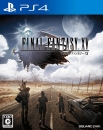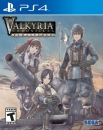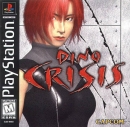| spemanig said: Majora's Mask was a success because it was accessable. It brought themes normally only prevelent to mature media to kids. 99% of people who played Majora's Mask played and understood it as children. The game respected gamers of all ages, like the best Zelda games do. It told you that you may be in a scary world, but it trusted you to save it. As a child, you were asked to be brave and to care for other's problems and to make responsable decisions. The game had subtlety. It didn't have to show you horrible acts of violence to let you know things weren't right. Just a face on the moon, and real people reacting genuinly to their inevitable demise. You thought Mikau's death was gorey or disturbing!? The guy got up, sang a song with his fish guitar, and vanished in light particles. Come on, dude. There is nothing in Majora's Mask that merit's an M or T rating. So what if the game was creepy. So was the Nightmare Before Christmas. Arms fall off in that film, but it's still a kids film. A guys face is mutilated with your very hands in Bioshock: Infinite. You regularly blow people's faces off in The Last of Us. The most desturbing things in Majora's Mask are Link's mask trainsformation because he screams in agony for a second. It's not very violent. It's not gorey. There's no language. Majora's Mask today wouldn't get a T rating. E10 is already pushing it. So again, you clearly don't understand why these games are so good. Thankfully, Aonuma does. A Link Between Worlds is proof. That being said, every 3D Zelda game with an E rating is better than the ones with a T rating. Every 3D Zelda with child Link is better than ones with only "teen" Link. I seriously hope that Zelda Wii U is Rated E again with a younger Link. Stop trying to please hardcore crybabies. EDIT: Here are some quote's from a brilliant article called Majora's Mask - Nintendo's Fluke (http://www.4colorrebellion.com/archives/2009/03/27/majoras-mask-nintendos-fluke/) "This is what bothers me about the more recent Zelda titles. Twilight Princess and Phantom Hourglass were fantastic games. The gameplay mechanics were as solid as they could possibly be. But they were unsatisfying, and I think the reason for that is that they were “safe” games. Ocarina of Time, Majora’s Mask, and Wind Waker were amazing, ambitious games that, despite sharing common gameplay mechanics, were all radically different experiences. Every Zelda game to come since then (with the slight exception of Minish Cap) has felt like a retreat to, and retread of, familiar ground." "If this next part sounds pretentious, forgive me and bear with me a little longer. Cool? The themes of Majora’s Mask are completely reflected by its art style. On one level, Termina is similar in many ways to the more familiar Hyrule of Ocarina of Time, save for this niggling little difference. Just as Majora’s Mask is a thematically darker game than Ocarina of Time, Termina is a slightly twisted and diseased version of Hyrule. The clearest example of this is in the character and monster designs. Majora’s Mask leans a little more towards the grotesque. When Link puts on a mask, the transformation is not exactly smooth. He almost appears to be in pain as he is twisted and bent into his new shape. The game is filled with these little artistic marks, these indications that something is wrong with the world. Even the innocent townspeople smile in this way that makes them seem a little more suspicious. The darker themes are reinforced by the color palette. Typically, a game with darker themes makes them quite literal by setting the game in a “dark” world. Even the Zelda series did this inTwilight Princess. Majora’s Mask is a little different, and therefore a little more effective. Majora’s Mask uses a darker color palette, but it doesn’t do this by turning down the brightness. Instead, it heavily focuses on harsher colors like purple, red, and green. Many areas and characters in Majora’s Mask are just as “bright” as those in Ocarina or Time, but the difference is that through their colors, they are made more alien: familiar, but a little different. Again, everything seems just a little more twisted and, by extension, a little darker." "This actually happened back in 2000, albeit on a bit of a technicality, as Majora’s Mask was rated “E for Everyone” in the United States. But that makes this all the more poignant. Why is it that this E-rated game is more mature than the bulk of games rated Mature? It isn’t because of boobies or blood, nor is it because Link decided to take up superfluous, forced swearing as a hobby. It’s because Majora’s Mask is a game that evokes an incredibly guttural emotional reaction from the player. I don’t mean glamorized emotions like love or anger, either – the centerpieces of what would be a real “mature” title. Majora’s Mask instead evokes far more primal emotions – those of fear, anxiety, and hopelessness." |
Personal opinion: Majora's Mask was rated E because it was the sequel to Ocarina. When actually looking at the content of Twilight Princess in comparison, you see the same clean content and LESS dark and disturbing material receive a higher ESRB rating. The ESRB was inconsistent because they expected Majora's Mask to be an E game and Twilight Princess to be a T game based on it's art style.
It's called confirmation bias.
Also, comparing the T Zeldas to the E ones is a bit unfair. All of the major installments except Twilight Princess are E, and like I said, Twilight Princess doesn't really differ from an E Zelda in any meaningful way. Either the ESRB made a mistake with Majora's Mask or they've become more strict over the years.
The thing that I'm trying to say, though, is that Majora's Mask is, by design, an emotionally punishing game. The game tries to get under your skin by forcing you to play the tutorial section as Deku Link and the like. In my mind a remake which is faithful to the spirit of the game will look for other ways to play head-games with the player, like showing character death or by showing Link's failures to the players. There were good reasons they didn't do this with the original; their target audience were children, and shocking deaths wouldn't have been too appropriate. The N64 didn't have enough memory to show players their failures in flashback. Neither of those are true anymore.




















